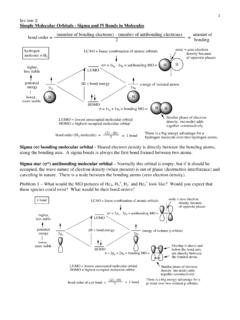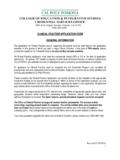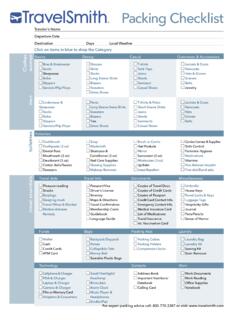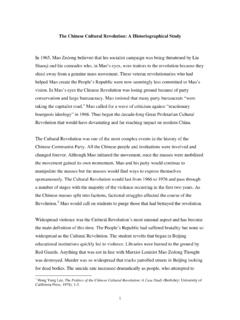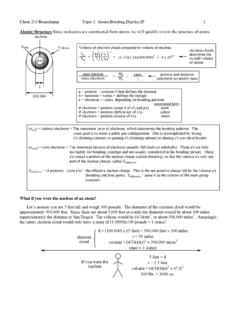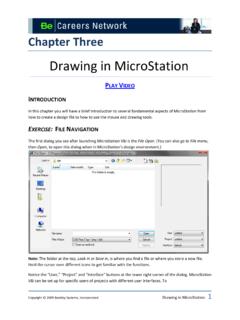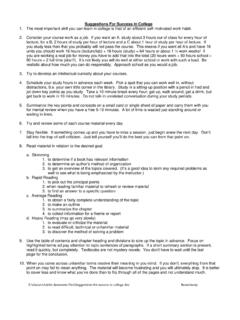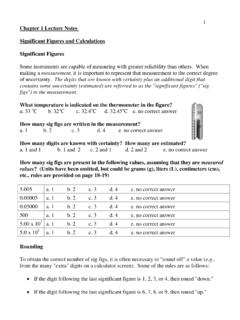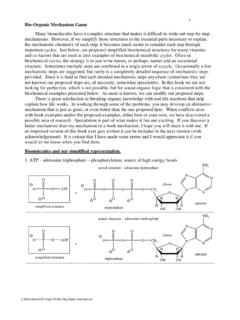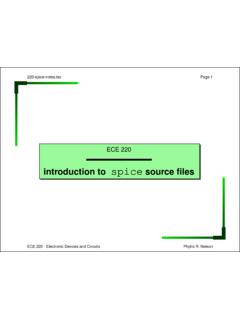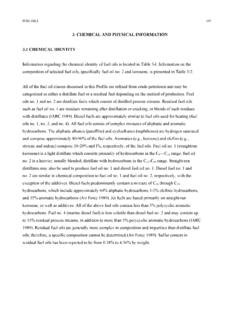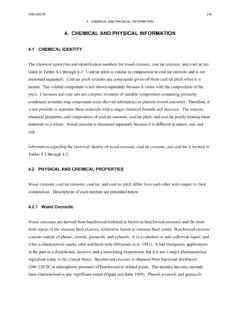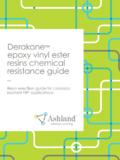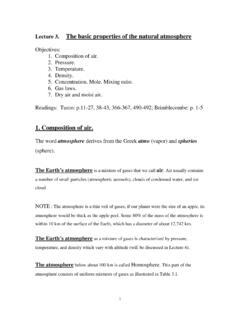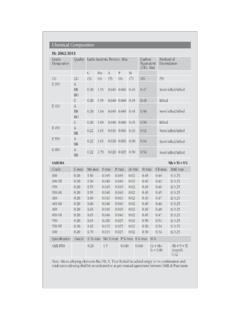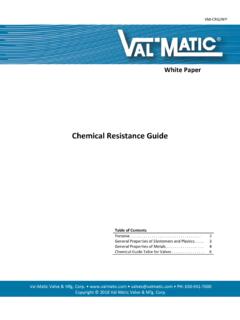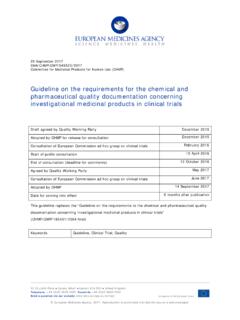Transcription of Chemical Engineering Thermodynamics II - CPP
1 Chemical Engineering Thermodynamics II (CHE 303 Course Notes) Nguyen Chemical and Materials Engineering Cal Poly Pomona (Winter 2009) Contents Chapter 1: Introduction Basic Definitions 1-1 Property 1-2 Units 1-3 Pressure 1-4 Temperature
2 1-6 Energy Balance 1-7 Example : Gas in a piston-cylinder system 1-8 Example : Heat Transfer through a tube 1-10 Chapter 2: Thermodynamic Property Relationships Type of Thermodynamic Properties 2-1 Example : Electrolysis of water 2-3 Example : Voltage of a hydrogen fuel cell 2-4 Fundamental Property Relations 2-5 Example : Finding the saturation pressure 2-8 Equations of State 2-11 The Virial Equation of State 2-11 Example : Estimate the tank pressure 2-12 The Van de Walls Equation of State 2-13 Example : Expansion work with Van de Walls EOS 2-15 Soave-Redlick-Kwong (SRK) Equation 2-17 Example : Gas Pressure with SRK equation 2-17 Example : Volume calculation with SRK equation 2-18 Properties Evaluations 2-21 Example : Exhaust temperature of a turbine 2-21 Example.
3 Change in temperature with respect to pressure 2-24 Example : Estimation of thermodynamic property 2-26 Example : Heat required to heat a gas 2-27 Chapter 3: Phase Equilibria Phase and Pure Substance 3-1 Phase Behavior 3-4 Example : Specific volume from data 3-7 Introduction to Phase Equilibrium 3-11 Pure Species Phase Equilibrium 3-12 Gibbs Free Energy as a Criterion for Chemical Equilibrium 3-12 The Chemical Potential 3-13 Vapor Liquid Phase Equilibrium 3-16 Example : Horsepower of a compressor 3-18 Example : Two-level refrigeration system 3-19 The Clapeyron Equation 3-23 Example : Triple point estimation 3-27 Refrigeration 3-30 i Example : A vapor compression refrigeration cycle 3-31 Example : A refrigeration cycle using refrigerant 134a 3-32 Example : A refrigeration cycle using refrigerant 134a 3-34 Example.
4 A refrigeration cycle with nonideal compressor 3-35 Partial Molar Properties 3-36 Example : Partial molar volume 3-37 Example : Enthalpy of mixing 3-38 Example : Enthalpy-concentration chart 3-39 Chapter 4: Principle of Phase Equilibrium II The Phase Rule 4-1 Example : The degree of freedom 4-1 Example : Degree of freedom for vapor-liquid equilibrium 4-2 The Fugacity 4-3 Example : Fugacity of liquid water 4-5 Example : Fugacity using Van der Waals EOS 4-6 Example : Fugacity of steam 4-10 Example : Change in Gibbs energy 4-11 Fugacity of Species i in a Gas Mixture 4-15 Example : Fugacity using Peng-Robinson EOS 4-17 Fugacity in the Liquid Phase 4-19:20 Chapter 5: Applied Phase Equilibrium Vapor-Liquid Equilibrium for Ideal Systems 5-1 Example : Bubble point temperature calculation 5-3 Example : Bubble point pressure calculation 5-5 Example : Dew point temperature calculation 5-6 Example : Dew point pressure calculation 5-8 Example : Txy diagram for benzene-toluene mixture 5-9 Example.
5 Dew point pressure using K-values 5-11 Isothermal Flash Calculation Using K-values 5-15 Example : Isothermal flash with V/F specified 5-18 Example : Isothermal flash with T specified 5-20 Vapor-Liquid Equilibrium with Non-ideal Liquid 5-23 Example : Bubble point pressure with Van Laar model 5-25 Example : Bubble point temperature with Wilson model 5-26 Example : Dew point temperature with Wilson model 5-28 Example : Txy diagram with Wilson model 5-31 Fitting Activity Coefficient Models with VLE Data 5-35 Example : Evaluation of Margules and Van Laar parameters 5-37 Example : Evaluation of Wilson parameters 5-43 Azeotropes 5-45 Example : Evaluation of Wilson parameters 5-50 Estimation of Activity Coefficients 5-52 Example : Acetone mole fraction in a system with air 5-52 Example : Solubility of ethane in n-heptanol 5-54 Phase Behavior in Partially Miscible Systems 5-55 ii Example : Liquid mixture in two separate phases 5-56 Example : Liquid mixture in a single phase 5-56 Example : LLE for a binary mixture 5-61 Vapor-Liquid-Liquid Equilibrium: VLLE 5-63 Example : Composition and pressure for a VLLE system 5-64 Example : VLLE calculations 5-66 Example : VLLE estimation 5-68 Example.
6 VLLE for water and hydrocarbon 5-71 The Thermodynamics of Osmosis 5-73 Example : Estimation of the PVC molecular weight 5-76 Example : Dissociation of NaCl molecules 5-78 Distribution of a Solute Between Liquid Phases 5-79 Solubility of a Solid in a Liquid Phase 5-79 Example : Solubility of a Drug 5-81 Distribution of a Solute Between Liquid Phases 5-84 Example : Drug Extraction from the Aqueous Phase 5-87 Example : Purification of an Antibiotic 5-88 Single-Stage Equilibrium Extraction 5-89 Example : Drug Extraction from the Aqueous Stream 5-90:91 Chapter 6: Chemical Equilibrium Introduction 6-1 Example : Extent of reaction and fractional conversion 6-2 Example : Time to reach 90% conversion in a batch reactor 6-5 Chemical Reaction and Gibbs Energy 6-6 The Condition of Equilibrium for a Chemical Reaction 6-9 Calculation of Equilibrium Constant from Data 6-11 Example : Equilibrium constant for methanol reaction 6-11 Example : Equilibrium constant for nitrogen oxide 6-12 Variation of Equilibrium Constant with Temperature 6-14 Example : Methanol reaction at 60oC 6-17 Example : Pyrolysis of methanol 6-18 Homogeneous Gas Phase Reaction 6-20 Example : Decomposition of Ethane 6-21 Example : Partial pressure of monatomic hydrogen 6-23 Heterogeneous Reaction 6-30 Example : Activity of water 6-31 Example : Equilibrium conversion for isomerization 6-32 Example.
7 Dissociation of CaCO3(s) 6-33 Thermodynamics of Pack Cementation 6-34 Equilibrium in Electrochemical Systems 6-37 Example : Copper etching 6-40 Complex Chemical Equilibrium 6-41 Example : Number of independent reactions 6-42 Example : Number of independent reactions 6-43 iii ivAppendix Appendix A: Solving Algebraic Equations The Newton-Raphson Method A-1 Example : Newton-Raphson method for a root in [1, 2] A-2 Newton s Method for Systems of Nonlinear Algebraic Equations A-3 Example : Newton method for 3 nonlinear equations A-4 Solving set of nonlinear equations with Excel A-6 Appendix B: Curve Fitting Nonlinear Curve Fitting B-1 Example : Fit the function T(t; , h) = (1 e ht) to the data B-4 Appendix C: Process Simulator (Provision) Appendix D: Previous Exams Quiz 1 D-1 Quiz 2 D-3 Quiz 3 D-7 Quiz 4 D-9 Quiz 5 D-12 Answer to Quizzes 1-1 Chapter 1 Introduction Basic Definitions Thermodynamics is the science that seeks to predict the amount of energy needed to bring about a change of state of a system from one equilibrium state to another.
8 While Thermodynamics tells us nothing about the mechanisms of energy transfer, rates of change, and time associated with a system changing from one equilibrium state to another, it is still the lynch-pin that allow us to answer these questions. Definition of 'heat': Heat is energy in transit solely as a result of a temperature difference. Definition of 'work': Work is energy exchange between system and surroundings due to any phenomenon except a temperature difference. Definition of 'temperature': Temperature is a measure of the mean kinetic energy of molecules. Absolute zero (0oK) is a state of complete motionless of molecules. 'Rate': 'Rate' implies an element of speed, how fast an event happens, and time. 'System': In Thermodynamics , the universe can be divided into two parts. One part is the system, the other part is the rest of the universe called the surroundings. System can be classified as (1) isolated system where no mass or energy is transferred across the system boundaries, (2) closed system (system) where only energy is transferred across the system boundaries, or (3) open system (control volume) where mass and energy can be transferred across the system boundaries.
9 A system is any designated region of a continuum of fixed mass. The boundaries of a system may be deformable but they always enclose the same mass. `SurroundingsBoundarySystem Figure Schematic diagram of the "universe", showing a system and the surroundings. 1-2 'Control volume': A 'control volume' is also any designated region of a continuum except that it may permit matter to cross its boundaries. If the boundaries of a control volume are such that matter may not enter or leave the control volume, the control volume is identical to a system. In these respects, a 'system' is a subset of a 'control volume'. 'Equilibrium': 'Equilibrium' means that there are no spatial differences in the variables that describe the condition of the system, also called the 'state' of a system, such as its pressure, temperature, volume, and mass (P, T, V, m), and that any changes which occur do so infinitesimally slowly.
10 The laws of Thermodynamics are applicable only to equilibrium states which means that the state does not really change significantly with time, differences in variables between the state of a system and its surroundings are of infinitesimal magnitude and that within the system itself there are no spatial variations of the variables that determine its state. Using Thermodynamics , we can predict the amount of energy needed to change a system from an equilibrium state to another. For example it will take about 75 kJ to change 1 kg of air at 25oC and 1 atm to 100oC and 1 atm. It will take much more energy, about 2257 kJ, to change 1 kg of water at 100oC and 1 atm to water vapor (steam) at the same temperature and pressure. 75 kJrequiredAir, 1 atm 25 C 1 kgoAir, 1 atm 100 C 1 kgo2257 kJrequiredWater1 atm100 C 1 kgoSteam1 atm100 C1 kgoState 1 State 2 State 1 State
